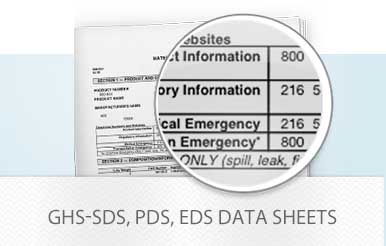"Overhead costs?," he asks in mid-brush stroke. "You mean those pesky little items like office rent, telephone and lights?
"Sure I pay them," he answers, loading the brush with more paint. "But it's only $45 a month for the phone, and it's our home line. Another $50 for lights sounds right. I mean we can't live in the dark. And as for rent, well the office is really the spare bedroom. No big deal."
Wrong! Overhead costs are a very big deal costing companies large and small thousands of dollars each year. Making sure you get everything that's owed to you – including compensation for costs of doing business – starts with proper estimating.
Estimating isn't just about labor expenses and material costs. It's about making a profit, a profit that's built into every job bid. It begins with identifying and accounting for all costs – labor, materials, taxes, and scaffolding, permits, lights, gas, office supplies, rent and everything else associated with operating your business and completing the job.
Sharpen your pencil
The goal of estimating is to guide you in calculating a job price that covers all expenses and earns the company a profit . To do this right requires comprehensive budgeting and accurate job costing.
The first step is to make a complete accounting of all costs. The list is lengthy, with wages, salaries, benefits, insurance, material, equipment, advertising, supplies, services and more. Check your last financial statement or your checkbook register to track where the money goes.
Be sure to include your salary as a cost. Too many painting contractors forego a salary, telling themselves they'll take what's left over. That's a recipe for disaster.
Failing to factor in your pay not only prevents you from generating a true profit, but it can leave you, your #1 employee, without a paycheck. Not a very nice reward for your hard work.
Calculating a company labor rate will help you consistently produce profitable jobs and pay yourself. The company labor rate, as proposed by former wallcovering and painting contractor Lynn Fife, in his book Guaranteed Profits in the Painting Business, accounts for all actual costs – everything from salary and taxes to office supplies and the telephone – and guarantees that your jobs are profitable.
Each employee's labor rate, including your own, can be calculated this way and then applied to the job.
No overhead? Think again.
Contractors who say they have no overhead expenses are fooling themselves. They might as well be leaving money on the table. Using Fife's formula, everything associated with conducting your business – labor, material costs, even company uniforms and vehicle costs – are not only covered, but these expenses earn the company a 15% profit.
Some of you may be worrying that closely tracking so many costs will necessitate pricing yourselves out of the market. Before you take that course, be sure you know the going rates in your market. Are you truly competitively priced, or are your prices lower to get the job? A word of caution if staying busy is your goal. There is a big difference between working for wages and running a profitable business. Wage earners calculate success by how many hours and how many jobs they work, taking what's left over. Successful business owners measure success by how profitable the company is after they've paid all expenses and themselves a desirable wage.
So the question is, would you rather work hard at building a $500,000 business, paying yourself 15% ($75,000)? Or would you rather pay yourself $60,000 from your $300,000 business and figure out what to do with the year-end 15% profits ($45,000) while on vacation? PDCA (www.pdca.org) offers courses and books about estimating. Call them at 800-332-7322 for further information.
Calculating Rates
Every employee is assigned a company labor rate. Using Fife's formula, we arrive at the company labor rate for a painter earning $600 a week like this:
1.) A $600-a-week painter earns $2,600 a month. On top of this, this particular painting company pays health insurance premium co-pay and workers' compensation for another $300 a month. This takes care of the painter's compensation costs.
Next we assign the painter a contribution to overhead. As one of the company's five employees (include yourself in the count), each employee is assigned a 20% monthly contribution to overhead. This is arrived at by calculating all related expenses, such as phone, office expenses, supplies, postage, advertising, utilities, loans, maintenance/repairs, equipment purchases, equipment leases, vehicle expense, capital reserve, corporate taxes, etc. In this example, that total is $48,000 a year. The employee's monthly contribution is $800. ($48,000 ÷ 5) ÷ 12 = $800.
To arrive at this painter's total monthly expenses, we add $2,600 + $300 + $800 = $3,700.
2.) Calculate the average monthly labor hours.
40 hours x 4 weeks = 160 hours.
3.) Calculate the hourly overhead dollar amount, or total monthly overhead expenses divided by monthly labor hours.
$3,700 ÷ 160 = $23.125/hour.
4.) Calculate your desired profit.
Say it's 15%. You will divide the hourly overhead dollar amount by the inverse of 15%, (1.00 – .15 = .85)
$23.125 ÷ .85 = $27.20
This employee's hourly rate is $27.20.






